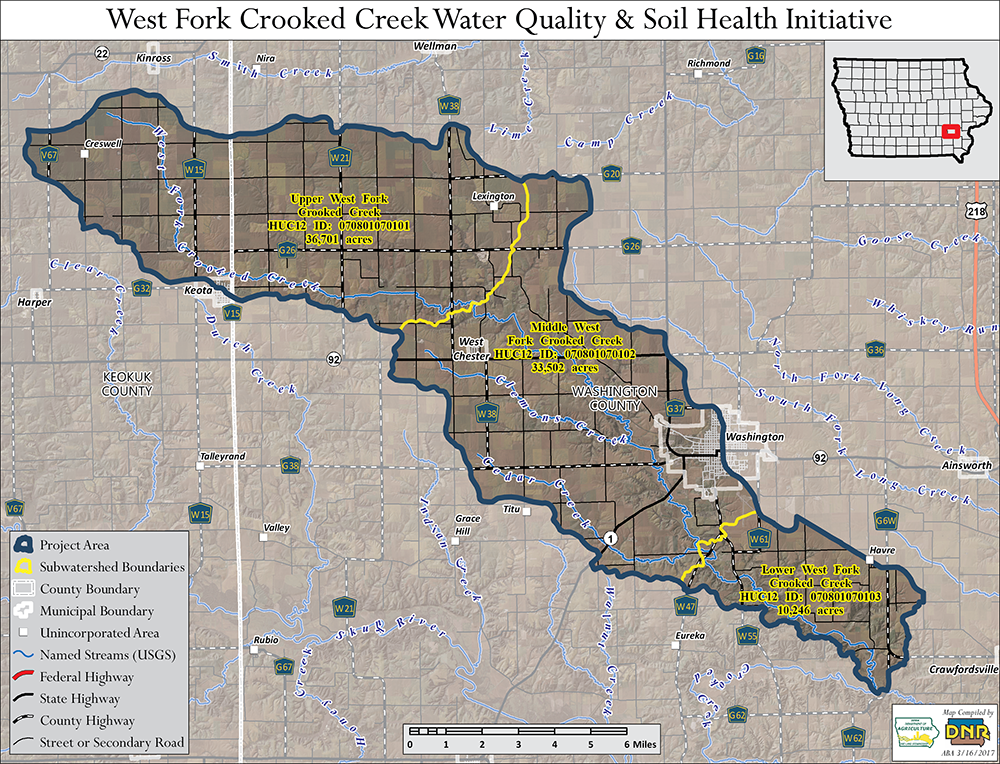A watershed is the area of land that drains into a lake or stream. Water traveling over the surface or through groundwater may pick up contaminants like sediment, chemicals and waste and deposit them in a body of water. We all live in a watershed. Watersheds can be small — like the area that drains into the creek behind your house. Or, watersheds can be large — think of all the land, streams and rivers that drain into the Mississippi River!
John Wesley Powell, scientist geographer, put it best when he said that a watershed is, “that area of land, a bounded hydrologic system, within which all living things are inextricably linked by their common water course and where, as humans settled, simple logic demanded that they become part of a community.”
Watersheds come in all shapes and sizes. They cross county, state, and national boundaries. In the continental U.S., there are 2,110 watersheds; including Hawaii, Alaska, and Puerto Rico, there are 2,267 watersheds.

The project also provides cost-share assistance to implement these practices, namely cover crops, bioreactors, wetlands, and grassed buffers. Educational efforts will include field days, newsletters, and informational meetings.
